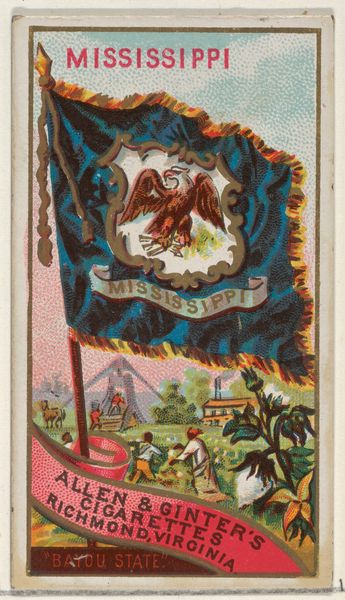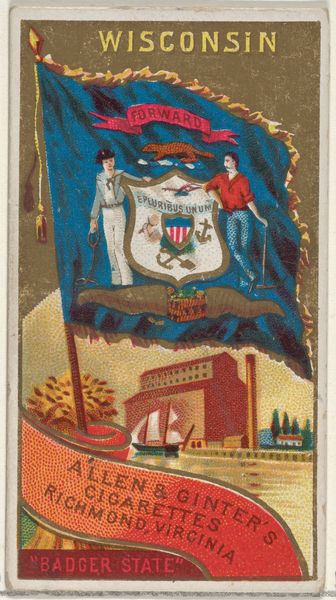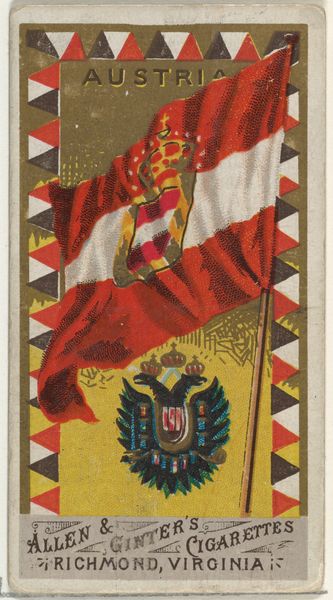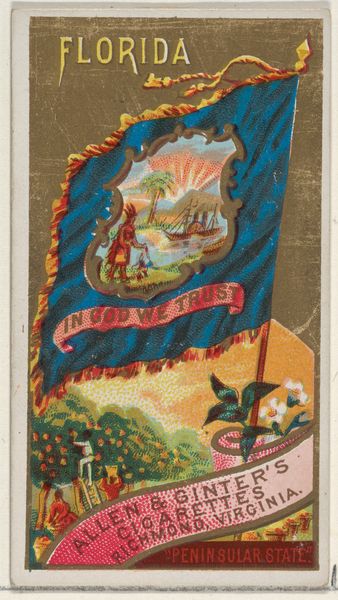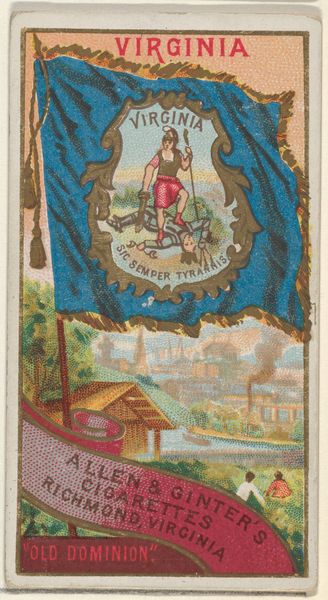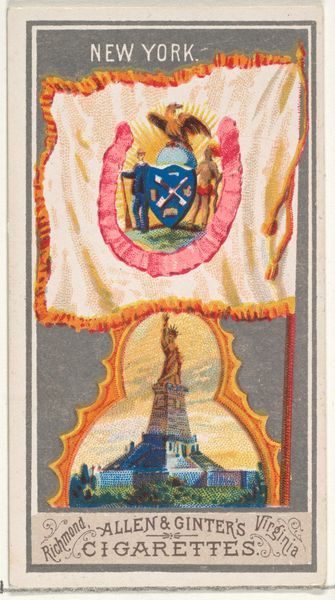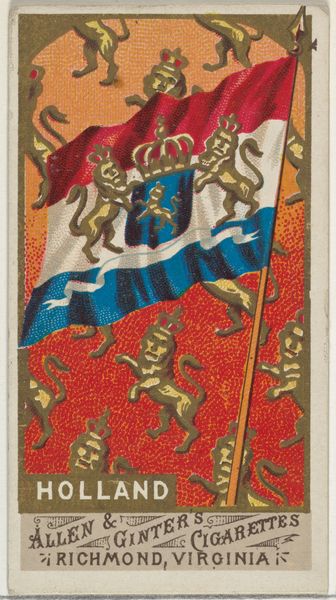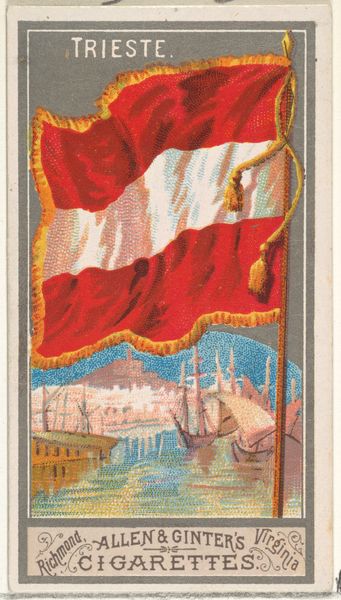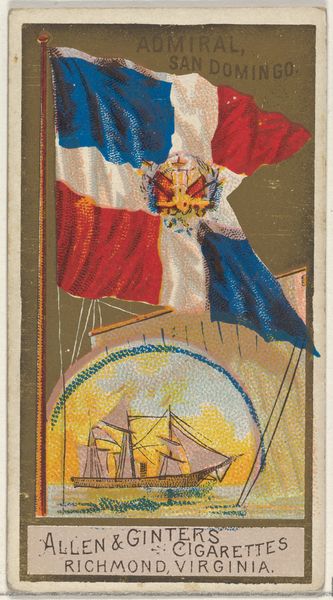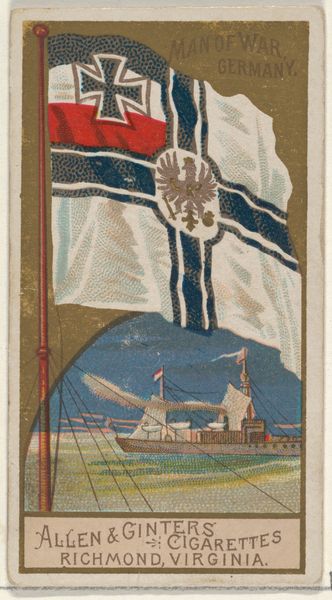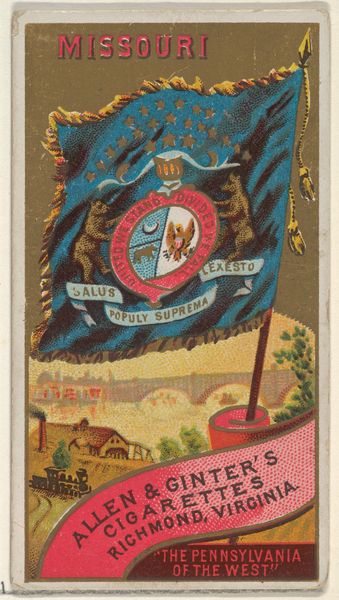
Indian Territory, from Flags of the States and Territories (N11) for Allen & Ginter Cigarettes Brands 1888
0:00
0:00
Dimensions: Sheet: 2 3/4 x 1 1/2 in. (7 x 3.8 cm)
Copyright: Public Domain
Curator: What immediately grabs me is the… exoticism. The figures are brightly colored, the tipis suggest a vast, unknown landscape…it feels romantic, in a way, though maybe falsely so? Editor: Well, let's unpack that feeling, as we explore the item at hand: it’s one in a series of printed cards from 1888 produced by Allen & Ginter Cigarettes entitled “Indian Territory, from Flags of the States and Territories." Currently it's held at the Metropolitan Museum of Art in New York. What stands out to me is that this tiny card functioned, in its day, as promotional ephemera–akin to modern-day product placement, though wrapped in nationalism and westward expansion. Curator: Promotional ephemera designed to fuel consumption. It’s unsettling how the beauty of Indigenous culture, however imagined, is being used to hawk tobacco. There is such a sharp contrast between what's visually appealing and the implicit intent behind its circulation. It hits differently knowing how Indigenous populations were being targeted during this same time with diseases and dispossession, and how advertising, even then, helped rationalize it. Editor: Right. These cards became miniature billboards that aestheticized Native life to push cigarettes. Think of the materiality here–printed with inexpensive inks, mass-produced... the transient nature of a trading card mirrors, in a sad way, the perceived disposability of Indigenous lives at that time. Also, by calling the depicted region "Indian Territory", it essentialized the territory as the space that belongs only to the “Indian”. It further distanced these “others” from modernity by presenting them like objects within a frame of the "civilized” population of the United States. Curator: And the use of the flag – the banner declaring "Indian Territory" – further complicates the narrative. On one hand, it suggests a sovereignty, a distinct nation, but also an area subject to external authority and appropriation for financial benefits. Editor: Indeed, and one crafted using a very cheap form of paper, labor, ink and intent. It’s not a representation meant to stand the test of time or offer deeper understanding. It's an image consumed, like the cigarette itself. Curator: Ultimately, this piece reveals the manipulative power of images – then, as now – and our complicated relationship with them. Editor: For me, the artwork becomes a reminder to stay critical, examining the hidden hands that produce the very fabrics of our culture and its inherent power dynamics.
Comments
No comments
Be the first to comment and join the conversation on the ultimate creative platform.
